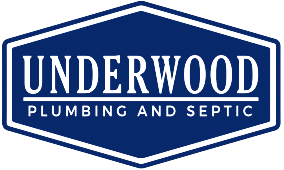Most people don’t think about what happens to their wastewater when it goes down the drain. Luckily, septic systems take care of nitty-gritty details. A septic system is a critical component of any home’s infrastructure and is responsible for efficiently disposing of wastewater. These systems are the unsung heroes when it comes to managing wastewater, and taking care of them is key to keeping your property running smoothly.
Today, the experts at Dusty Underwood Plumbing & Septic are sharing everything you need to know – from the different types of septic systems to the basics of maintenance.
IMPORTANCE OF SEPTIC SYSTEM CARE AND MAINTENANCE
Septic systems are the primary method of wastewater management for many homes and businesses in Texas, especially in areas where municipal sewer services are unavailable. These self-contained, underground systems are designed to treat and dispose of household waste, ensuring your property’s wastewater is handled safely and responsibly.
Proper septic system care and maintenance are crucial for several reasons:
Environmental Protection: Well-maintained septic systems help prevent the contamination of groundwater, surface water, and soil, protecting the local ecosystem and public health.
Cost Savings: Regular maintenance can extend the lifespan of your septic system, helping you avoid the costly expense of premature replacement or major repairs.
Property Value: A properly functioning septic system can positively impact the value of your home, as it demonstrates responsible ownership and care for the property.
Health and Safety: Neglecting your septic system can lead to sewage backups, foul odors, and potential health hazards, which can be detrimental to you and your family.
COMMON TYPES OF SEPTIC SYSTEMS
Septic systems come in various configurations, each designed to meet the unique needs of a property. Here are the three most common types of septic systems:
TRADITIONAL SEPTIC SYSTEMS
Traditional septic systems, also known as conventional or gravity-fed systems, consist of a septic tank and a drain field (or leach field), where the wastewater is dispersed and treated through natural processes in the soil.
CHAMBER SEPTIC SYSTEMS
Chamber septic systems are a variation of the traditional design, featuring a series of perforated, plastic chambers instead of a traditional gravel-filled drain field. This configuration can be more compact and efficient, making it a popular choice for properties with limited space or challenging soil conditions.
AEROBIC SEPTIC SYSTEMS
The most popular choice for property owners in Texas, Aerobic septic systems use an electrical component, such as a compressor or blower, to introduce oxygen into the septic tank. This oxygen-rich environment promotes the growth of aerobic bacteria, which can more effectively break down and treat the wastewater before it is dispersed into the drain field.
BASIC SEPTIC SYSTEM MAINTENANCE
Maintaining your septic system is essential for its long-term performance and efficiency. Regular inspections, pumping, and minor repairs can prevent costly issues down the line. Some critical maintenance tasks include:
- Septic Tank Pumping: Most experts recommend having your septic tank pumped every 3-5 years, depending on the size of your household and the tank’s capacity.
- Inspections: Schedule regular inspections with a professional to identify any potential problems or areas of concern, such as clogged lines, damaged components, or signs of system failure.
- Water Conservation: Reduce water usage and avoid overloading the system to prevent premature wear and tear.
- Proper Disposal: Refrain from flushing non-biodegradable items, such as diapers, wipes, or feminine products, which can clog or damage your septic system.
SIGNS OF SEPTIC SYSTEM PROBLEMS AND WHEN TO CALL FOR SEPTIC SERVICES
Recognizing the signs of a malfunctioning septic system is crucial for addressing issues before they escalate. Some common indicators of septic system problems include:
- Slow-draining sinks or toilets
- Sewage odors around the septic tank or drain field
- Lush, green grass over the drain field (a sign of system overload)
- Backups or flooding in the home
- Contaminated well water or standing water near the septic system
If you notice any of these issues, it’s essential to contact a professional septic service provider like us at Dusty Underwood as soon as possible to diagnose and address the problem.
FINDING PROFESSIONAL SEPTIC SERVICES IN BONHAM, TX
Maintaining the health and efficiency of your septic system is crucial for protecting your property, the environment, and your family’s well-being. When it comes to keeping it in its best condition, you want to work with a professional with the experience and expertise to get the job done right the first time. For the best septic services in the Bonham area, choose Dusty Underwood. Contact us today to schedule a visit from one of our septic experts.

